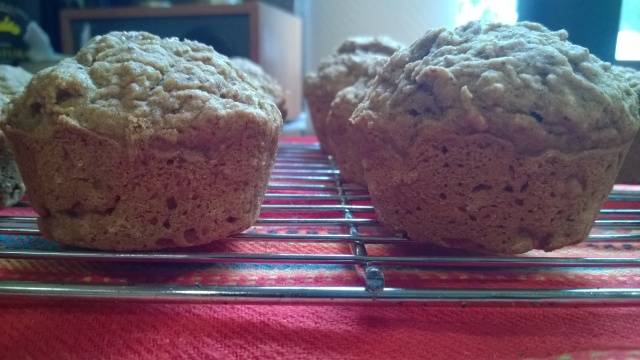I took a short trip to Portland and the Oregon coast for a few days this week. On the little getaway I was able to try a couple of the New Hope Blogger Box supplements because they were conveniently packaged for portability. ![F8F114EC-3821-4B1C-B3BA-28D6734E4E12[1]](https://i0.wp.com/botanicalalchemyandapothecary.com/wp-content/uploads/2018/08/F8F114EC-3821-4B1C-B3BA-28D6734E4E121.jpg?resize=828.75%2C833&ssl=1)
I didn’t take a lot of supplements with me since it was such a quick trip, so these two products were perfect to take along. The Green Vibrance by Vibrant Health is chock full of superfoods, probiotics, and tastes delicious. The chocolate coconut flavor does not disappoint. I was really happy to be able to take such a nutrient-packed supplement which covered a lot of bases all in one convenient powder packet. I believe the actual product does not come in these little packets by the way, but instead in a more eco-friendly container which works better for everyday use.
This collagen booster below from Fusion Naturals is vegan, tastes naturally fruity, and is in attractive packaging which I always thoroughly appreciate. It is lovely from the outside and delicious tasting so definitely a quality product. I like using a jar to shake up the powder with the water, but on the trip I just put the powder in a glass of water and stirred with a spoon. Either way works. ![9FE53C8F-171D-4B58-812E-68D55A51E6F4[1]](https://i0.wp.com/botanicalalchemyandapothecary.com/wp-content/uploads/2018/08/9FE53C8F-171D-4B58-812E-68D55A51E6F41.jpg?resize=828.75%2C829&ssl=1)
Inexplicably, I’ve been craving soup this hot, hot summer. Cooking it sounded like too much of a sweat session (we don’t have A/C) so I’ve just left the desire alone, marinating until crisper fall days. Until today that is. It’s only 68 degrees and since I’ve just come back from the Oregon coast where we had one warm day, one cool day, and one in-between, that cool day really got my thoughts revolving around soup until there was no chance of putting it off anymore. Lentil soup is one of my favorites, and each time I make it the recipe is a bit different. The things I always put in are garlic, onion, leeks, and potatoes, but sadly I didn’t remember the leek at the grocery store today. I added a sweet potato this time, just because I had one on hand, and carrots which are regular items. Lentils are one of the few legumes that don’t need to pre-soak before cooking, but a rinse does the dry beans good and it also gives the cook a chance to pick them over and toss out any that are discolored or any items that are not in fact legumes that might have gotten mixed in with them, especially if you buy them from a bulk bin. Here’s today’s recipe:
![98349DF0-652C-4BD5-9C55-97A2593031E2[1]](https://i0.wp.com/botanicalalchemyandapothecary.com/wp-content/uploads/2018/08/98349DF0-652C-4BD5-9C55-97A2593031E21.jpg?resize=300%2C300&ssl=1)
Lentil Soup
About 1 Tablespoon of olive oil
1 Yellow Onion
2 or 3 garlic cloves
2 medium sized carrots
2 potatoes
1 sweet potato
1.5 Cups French Green Lentils
5 Cups of vegetable broth
About 1-2 teaspoon (to personal taste. I like a lot of herbs in there.) each of Thyme, Oregano, Basil, Black Pepper, Sea Salt and a Bay Leaf
Chop up all the veggies in small pieces, making them all around the same size. Coat the bottom of large pot with olive oil (or another oil of choice) and start sauteing the onion until translucent, about 3 minutes. Add the other veggies and cook for another couple of minutes before adding the thyme, oregano, basil, and black pepper. Cook another couple of minutes, then add the broth, lentils, and bay leaf. Bring to a boil then turn it down to a low simmer until the lentils are soft which takes about 35-40 minutes, but it depends on a couple of factors, including the age of lentils. Once the lentils are soft, then add the salt to taste. Take the bay leaf out once the soup is finished. It’s always better the next day and just gets better over the next couple of days. This version is good but I miss the leek or two I usually have in it. It tastes great with either bread or rice and of course, if you like a thinner soup, add more broth or water. Also, you can always replace the teaspoons of herbs with a bouquet garni, preferable wrapped in the outer layer of a leek.
![0D8D70D7-383A-4DB5-A577-19727E390EED[1]](https://i0.wp.com/botanicalalchemyandapothecary.com/wp-content/uploads/2018/08/0D8D70D7-383A-4DB5-A577-19727E390EED1.jpg?resize=828.75%2C829&ssl=1)
Enjoy the second half of August! Late summer moving into early fall is my favorite time of year. More soup recipes will be coming shortly I’m sure, as well as some bread recipes for serving with them and I’d be forever grateful if you shared this with anyone who might be interested and please subscribe for weekly posts about herbs, natural health, and green beauty. Best health to you and yours!

![48BC3942-2879-42F6-B9F6-66273D4709D2[1] 48BC3942-2879-42F6-B9F6-66273D4709D2[1]](https://i0.wp.com/botanicalalchemyandapothecary.com/wp-content/uploads/2018/08/48BC3942-2879-42F6-B9F6-66273D4709D21.jpg?w=410&h=410&crop=1&ssl=1)
![2C876D82-CB0E-4B83-8191-F0A06005D1A1[1] 2C876D82-CB0E-4B83-8191-F0A06005D1A1[1]](https://i0.wp.com/botanicalalchemyandapothecary.com/wp-content/uploads/2018/08/2C876D82-CB0E-4B83-8191-F0A06005D1A11.jpg?w=410&h=410&crop=1&ssl=1)

![D1809FB8-B9F1-4689-B60C-9339B7600339[1] D1809FB8-B9F1-4689-B60C-9339B7600339[1]](https://i0.wp.com/botanicalalchemyandapothecary.com/wp-content/uploads/2018/08/D1809FB8-B9F1-4689-B60C-9339B76003391.jpg?w=435&h=385&ssl=1)
![39C26ACF-F500-463E-B596-CCD485D18014[1] 39C26ACF-F500-463E-B596-CCD485D18014[1]](https://i0.wp.com/botanicalalchemyandapothecary.com/wp-content/uploads/2018/08/39C26ACF-F500-463E-B596-CCD485D180141.jpg?w=385&h=385&crop=1&ssl=1)
![156184C2-C0A8-46D8-B13B-181A5AEEB3C3[1] 156184C2-C0A8-46D8-B13B-181A5AEEB3C3[1]](https://i0.wp.com/botanicalalchemyandapothecary.com/wp-content/uploads/2018/08/156184C2-C0A8-46D8-B13B-181A5AEEB3C31.jpg?w=392&h=428&ssl=1)
![6B0E92D9-6456-40AD-8DEE-C96FEDBDB962[1] 6B0E92D9-6456-40AD-8DEE-C96FEDBDB962[1]](https://i0.wp.com/botanicalalchemyandapothecary.com/wp-content/uploads/2018/08/6B0E92D9-6456-40AD-8DEE-C96FEDBDB9621.jpg?w=428&h=428&crop=1&ssl=1)
![8705102A-48E8-4198-B5EE-25217AB370F1[1] 8705102A-48E8-4198-B5EE-25217AB370F1[1]](https://i0.wp.com/botanicalalchemyandapothecary.com/wp-content/uploads/2018/08/8705102A-48E8-4198-B5EE-25217AB370F11.jpg?w=410&h=410&crop=1&ssl=1)
![72A820FD-FA6B-4E83-8AF6-5F205588BEA8[1] 72A820FD-FA6B-4E83-8AF6-5F205588BEA8[1]](https://i0.wp.com/botanicalalchemyandapothecary.com/wp-content/uploads/2018/08/72A820FD-FA6B-4E83-8AF6-5F205588BEA81.jpg?w=410&h=410&crop=1&ssl=1)
![FD54DE58-10D0-489D-A44C-6E417226EBE9[1]](https://i0.wp.com/botanicalalchemyandapothecary.com/wp-content/uploads/2018/08/FD54DE58-10D0-489D-A44C-6E417226EBE91.jpg?resize=615%2C615&ssl=1)
![8066C1B4-771C-4C71-A8D6-101435CD3A5B[1] 8066C1B4-771C-4C71-A8D6-101435CD3A5B[1]](https://i0.wp.com/botanicalalchemyandapothecary.com/wp-content/uploads/2018/08/8066C1B4-771C-4C71-A8D6-101435CD3A5B1.jpg?w=410&h=513&ssl=1)
![5EC1C9A7-DF28-48C1-96F3-05062C6877A9[1] 5EC1C9A7-DF28-48C1-96F3-05062C6877A9[1]](https://i0.wp.com/botanicalalchemyandapothecary.com/wp-content/uploads/2018/08/5EC1C9A7-DF28-48C1-96F3-05062C6877A91.jpg?w=410&h=513&ssl=1)
![8CA0070C-7026-41E1-89CE-A5CFCAFCE51D[1] 8CA0070C-7026-41E1-89CE-A5CFCAFCE51D[1]](https://i0.wp.com/botanicalalchemyandapothecary.com/wp-content/uploads/2018/08/8CA0070C-7026-41E1-89CE-A5CFCAFCE51D1.jpg?w=410&h=410&crop=1&ssl=1)
![35EC583B-C565-4A2D-A0A2-647B55A9F173[1] 35EC583B-C565-4A2D-A0A2-647B55A9F173[1]](https://i0.wp.com/botanicalalchemyandapothecary.com/wp-content/uploads/2018/08/35EC583B-C565-4A2D-A0A2-647B55A9F1731.jpg?w=410&h=410&crop=1&ssl=1)







![3C1FD6E1-D954-40E0-A007-774027D68578[1]](https://i0.wp.com/botanicalalchemyandapothecary.com/wp-content/uploads/2018/07/3C1FD6E1-D954-40E0-A007-774027D685781.jpg?resize=828.75%2C828&ssl=1)













